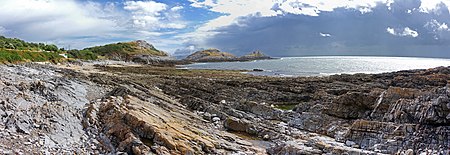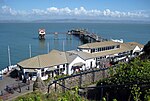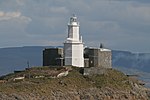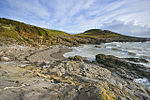Bracelet Bay

Bracelet Bay is a small bay on the south of the Gower Peninsula. It is the first bay one comes to after leaving Swansea Bay and rounding Mumbles Head. Surrounded by limestone cliffs, the bay is pebbly, with some sand. To the west, the bay is separated from Limeslade Bay by Tutt Hill, the location of a coastguard look-out station.A notable feature of the bay is the "Big Apple" kiosk, a concrete structure that was erected by the roadside during the 1930s as an advertising feature and has been a sales outlet ever since. Several similar kiosks were erected along the South Wales coast, but the one in Bracelet Bay is the only example surviving. In 2010 it was largely rebuilt after being damaged by a vehicle the previous year, and in 2019 it was designated a Grade II listed building.The name 'Bracelet' is thought to be a corruption of 'Broad Slade'.
Excerpt from the Wikipedia article Bracelet Bay (License: CC BY-SA 3.0, Authors, Images).Bracelet Bay
Mumbles Road,
Geographical coordinates (GPS) Address Nearby Places Show on map
Geographical coordinates (GPS)
| Latitude | Longitude |
|---|---|
| N 51.56519 ° | E -3.97795 ° |
Address
Bracelet Bay
Mumbles Road
SA3 4JT , Mumbles
Wales, United Kingdom
Open on Google Maps






